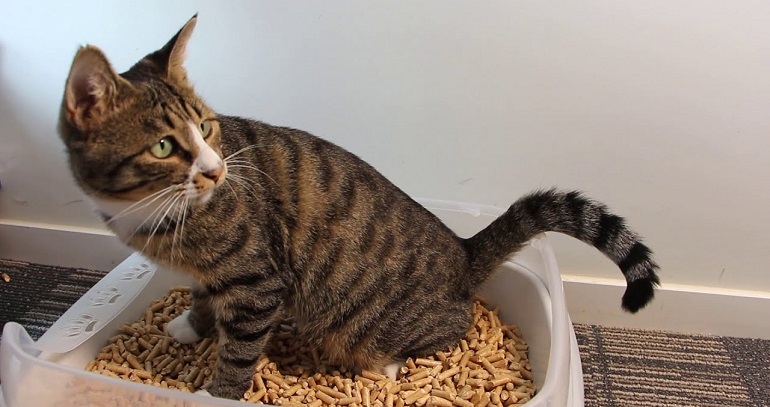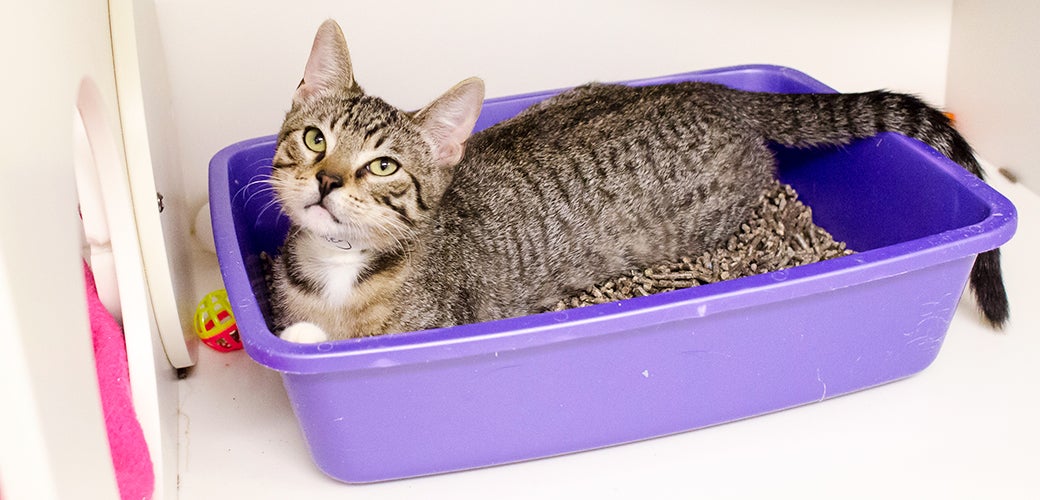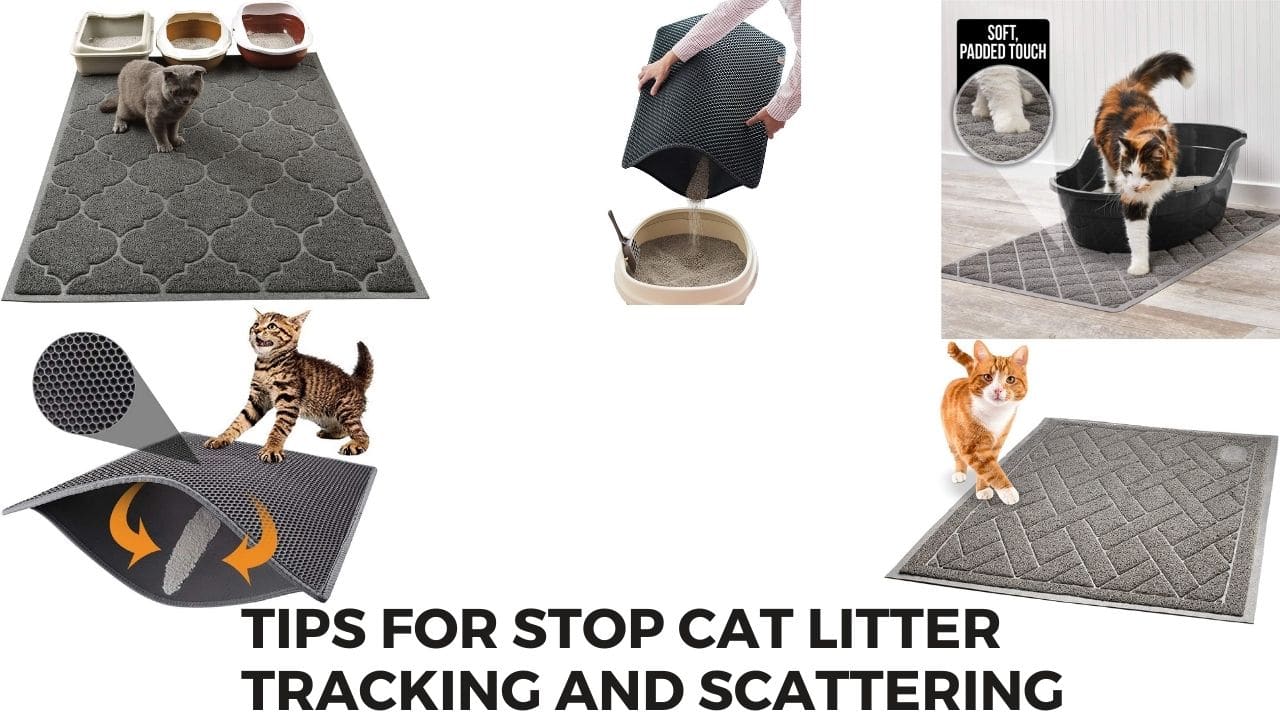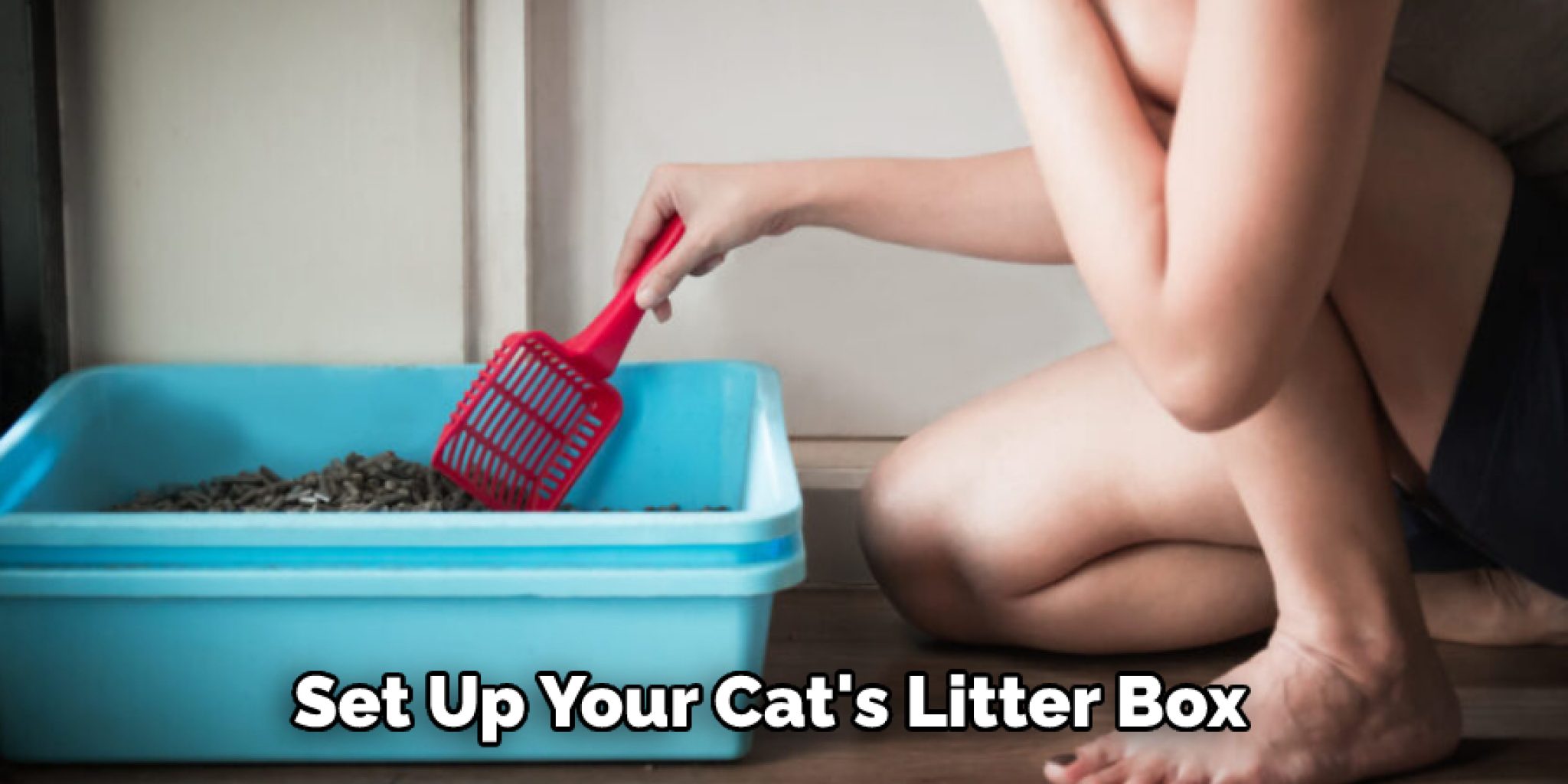The Frustrating Reality of Cat Litter Mess
Cat litter can be a source of frustration for many cat owners. The constant battle to keep litter from getting everywhere can be overwhelming, and it’s not uncommon for cat owners to feel like they’re fighting a losing battle. From the moment you pour the litter into the box, it seems like it’s only a matter of time before it’s scattered all over the floor, furniture, and even your clothes. The mess can be not only annoying but also unsanitary, making it essential to find effective solutions to this issue. One of the best ways to keep cat litter from getting everywhere is to understand the root causes of the problem and take proactive steps to prevent it. By identifying the sources of litter scatter and implementing strategies to minimize it, cat owners can enjoy a cleaner, healthier, and more stress-free home.
For many cat owners, the struggle to contain cat litter is a daily reality. Whether it’s the litter box itself, the type of litter used, or the cat’s behavior, there are many factors that contribute to the mess. However, with a little creativity and the right strategies, it’s possible to reduce litter scatter and keep your home clean and tidy. In this article, we’ll explore the best ways to keep cat litter from getting everywhere, from choosing the right litter to optimizing your litter box and using innovative accessories.
By taking a proactive approach to cat litter maintenance, you can enjoy a cleaner, healthier home and a happier, healthier cat. So, let’s dive in and explore the best ways to keep cat litter from getting everywhere. Whether you’re a seasoned cat owner or a newcomer to the world of cat parenthood, this article will provide you with the tips, tricks, and strategies you need to master the art of cat litter maintenance.
Understanding the Causes of Cat Litter Scatter
Cat litter scatter is a common problem that can be attributed to several factors. One of the primary causes of litter scatter is the type of litter used. Clumping clay litter, for example, is more prone to scattering than other types of litter due to its fine texture and tendency to break apart easily. On the other hand, natural litters like pine or recycled paper may be less likely to scatter, but can still cause messes if not properly maintained.
Cat behavior also plays a significant role in litter scatter. Cats are natural diggers, and their instinct to bury their waste can lead to litter being kicked out of the box. Additionally, cats may intentionally or unintentionally knock over the litter box, causing litter to spill onto the floor. Litter box design is another contributing factor, as boxes with low sides or inadequate size can make it easy for litter to escape.
Furthermore, the size and material of the litter can also impact the amount of scatter. Larger litter particles may be less likely to scatter, but can still cause messes if not properly contained. Similarly, litters made from certain materials, such as silica gel or crystal, may be more prone to scattering due to their lightweight and easy-to-kick nature.
Understanding the causes of cat litter scatter is crucial in finding effective solutions to this problem. By identifying the root causes of litter scatter, cat owners can take proactive steps to minimize the mess and keep their homes clean and tidy. Whether it’s switching to a different type of litter, adjusting the litter box design, or modifying their cat’s behavior, there are several strategies that can help reduce litter scatter and make cat ownership more enjoyable.
How to Choose the Right Cat Litter for Minimal Mess
Choosing the right cat litter is crucial in reducing scatter and keeping your home clean. With so many types of litter available, it can be overwhelming to decide which one is best for your cat. However, by considering a few key factors, you can select a litter that minimizes mess and makes cat ownership more enjoyable.
One of the most important factors to consider is the type of litter. Clumping clay litter, for example, is a popular choice among cat owners due to its ability to form clumps when your cat urinates. This makes it easy to scoop out solid waste and leave the clean litter behind. However, clumping clay litter can be prone to scattering, especially if your cat is a vigorous digger. In this case, a natural litter like pine or recycled paper may be a better option.
Another factor to consider is the size of the litter particles. Larger particles may be less likely to scatter, but can still cause messes if not properly contained. Smaller particles, on the other hand, may be more prone to scattering, but can be easier to clean up. The material of the litter is also important, as some materials may be more prone to scattering than others. For example, silica gel or crystal litter may be more likely to scatter due to its lightweight and easy-to-kick nature.
Some popular cat litters that are known for their minimal mess include Dr. Elsey’s Precious Cat Ultra Premium Clumping Cat Litter and Swheat Scoop Natural Cat Litter. Dr. Elsey’s litter is a high-quality clumping clay litter that forms tight clumps and minimizes scatter. Swheat Scoop, on the other hand, is a natural litter made from whole kernel corn that is biodegradable and non-toxic. Both of these litters are highly rated by cat owners and are known for their ability to reduce mess and odor.
Ultimately, the best way to keep cat litter from getting everywhere is to choose a litter that meets your cat’s individual needs and preferences. By considering factors like litter type, size, and material, you can select a litter that minimizes mess and makes cat ownership more enjoyable.
Optimizing Your Litter Box for Reduced Scatter
Optimizing your litter box is crucial in reducing litter scatter and keeping your home clean. One of the most important factors to consider is the size of the litter box. A litter box that is too small can lead to litter being kicked out of the box, while a litter box that is too large can be overwhelming for your cat. A good rule of thumb is to choose a litter box that is at least 1.5 times the length of your cat.
Location is also a critical factor in reducing litter scatter. Placing the litter box in a high-traffic area or near a doorway can lead to litter being tracked throughout the house. Instead, choose a quiet and private location for the litter box, such as a laundry room or bathroom. This will help to reduce the amount of litter that is scattered and make cleaning easier.
Cleaning frequency is also important in reducing litter scatter. Scooping the litter box daily and changing the litter completely every 7-10 days can help to reduce the amount of litter that is scattered. It’s also important to clean the litter box regularly to prevent the buildup of bacteria and odors.
Another way to optimize your litter box is to use a litter box with low sides. This can help to prevent litter from being kicked out of the box and make it easier for your cat to enter and exit the box. You can also use a litter box with a hood or cover to help contain the litter and reduce scatter.
By optimizing your litter box, you can reduce litter scatter and keep your home clean. Remember to choose a litter box that is the right size for your cat, place it in a quiet and private location, and clean it regularly. With a little creativity and experimentation, you can find the best way to keep cat litter from getting everywhere and enjoy a cleaner, healthier home.
Effective Litter Box Placement Strategies
Placing the litter box in the right location is crucial in reducing litter scatter and keeping your home clean. One of the most important considerations is to avoid high-traffic areas, such as hallways or living rooms. These areas tend to be busy and can lead to litter being tracked throughout the house.
Another consideration is to avoid placing the litter box near carpeted floors or areas with a lot of furniture. These areas can be difficult to clean and can lead to litter getting stuck in the carpet or under the furniture. Instead, choose a location with a hard floor, such as a tile or wood floor, that is easy to clean.
Proximity to your cat’s favorite sleeping spots or eating areas is also important. Cats tend to prefer a quiet and private location for their litter box, so placing it near their favorite sleeping spots or eating areas can help to reduce stress and anxiety.
Additionally, consider the location of the litter box in relation to your cat’s age and mobility. If your cat is older or has mobility issues, it may be more difficult for them to access the litter box if it is placed in a hard-to-reach location. In this case, it may be better to place the litter box in a more accessible location, such as a laundry room or bathroom.
Some effective litter box placement strategies include placing the litter box in a quiet corner of a room, away from high-traffic areas and carpeted floors. You can also consider placing the litter box in a separate room or area, such as a laundry room or bathroom, to help contain the litter and reduce scatter.
By placing the litter box in the right location, you can reduce litter scatter and keep your home clean. Remember to avoid high-traffic areas, carpeted floors, and areas with a lot of furniture, and consider the location of the litter box in relation to your cat’s age and mobility.
How to Contain Cat Litter with Mats and Other Accessories
Containing cat litter can be a challenge, but there are several products and accessories that can help. One of the most effective ways to contain cat litter is to use a litter mat. A litter mat is a flat, rectangular mat that is placed under the litter box to catch any litter that is kicked out or spills over. These mats are usually made of a durable, easy-to-clean material and can be trimmed to fit under any litter box.
Another effective way to contain cat litter is to use a litter box liner. A litter box liner is a thin, flexible sheet that is placed inside the litter box to catch any litter that is kicked out or spills over. These liners are usually made of a durable, easy-to-clean material and can be easily removed and replaced when they become soiled.
Litter-catching systems are also available to help contain cat litter. These systems usually consist of a series of ramps or ledges that are placed around the litter box to catch any litter that is kicked out or spills over. These systems can be effective, but may require more maintenance than other methods.
Some popular products that can help contain cat litter include the Litter Mat and the Omega Paw Litter Box. The Litter Mat is a durable, easy-to-clean mat that is designed to catch any litter that is kicked out or spills over. The Omega Paw Litter Box is a litter box that features a built-in litter-catching system to help contain cat litter.
By using one or more of these products and accessories, you can help contain cat litter and keep your home clean. Remember to always follow the manufacturer’s instructions for use and maintenance to ensure the effectiveness of these products.
Additional Tips for Reducing Cat Litter Scatter
In addition to choosing the right litter and optimizing your litter box, there are several other tips and tricks that can help reduce cat litter scatter. One of the most effective ways to reduce scatter is to clean the litter box regularly. Daily scooping and weekly cleaning can help to remove any clumps or debris that may be contributing to scatter.
Using a litter scoop can also help to reduce scatter. A litter scoop is a tool that is specifically designed to remove clumps and debris from the litter box. By using a litter scoop, you can help to remove any clumps or debris that may be contributing to scatter.
Trimming your cat’s nails can also help to reduce scatter. Long nails can cause your cat to dig more aggressively in the litter box, which can lead to more scatter. By trimming your cat’s nails regularly, you can help to reduce the amount of scatter.
Another effective way to reduce scatter is to use a litter box with a low side. A litter box with a low side can help to prevent litter from being kicked out of the box. By using a litter box with a low side, you can help to reduce the amount of scatter.
Finally, consider using a litter that is specifically designed to reduce scatter. Some litters are designed to be less prone to scattering, and can help to reduce the amount of mess in your home. By using a litter that is specifically designed to reduce scatter, you can help to keep your home clean and tidy.
By following these tips and tricks, you can help to reduce cat litter scatter and keep your home clean and tidy. Remember to always clean the litter box regularly, use a litter scoop, trim your cat’s nails, and use a litter box with a low side. With a little bit of effort and creativity, you can keep your home litter-free and your cat happy and healthy.
Maintaining a Litter-Free Home with Regular Cleaning
Regular cleaning and maintenance are essential to keeping cat litter under control and maintaining a litter-free home. Daily scooping, weekly cleaning, and deep cleaning every few months can help to remove any clumps or debris that may be contributing to scatter.
Daily scooping is an important part of maintaining a litter-free home. By scooping out any clumps or debris from the litter box on a daily basis, you can help to prevent the buildup of bacteria and odors. This can also help to reduce the amount of scatter, as clumps and debris can be a major contributor to litter getting everywhere.
Weekly cleaning is also important for maintaining a litter-free home. By cleaning the litter box and surrounding area on a weekly basis, you can help to remove any dirt, dust, or debris that may have accumulated. This can also help to reduce the amount of scatter, as a clean litter box and surrounding area can help to prevent litter from getting everywhere.
Deep cleaning every few months is also important for maintaining a litter-free home. By deep cleaning the litter box and surrounding area, you can help to remove any built-up dirt, dust, or debris that may be contributing to scatter. This can also help to reduce the amount of bacteria and odors, which can be a major contributor to litter getting everywhere.
By following these tips and incorporating regular cleaning and maintenance into your routine, you can help to maintain a litter-free home and reduce the amount of scatter. Remember to always scoop out any clumps or debris from the litter box on a daily basis, clean the litter box and surrounding area on a weekly basis, and deep clean every few months.








